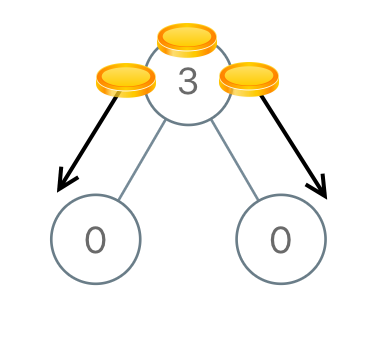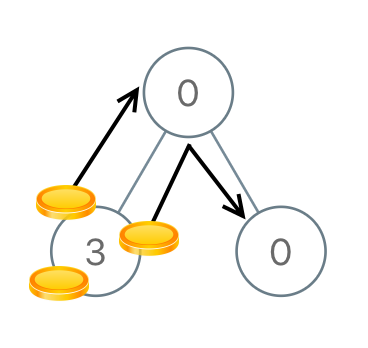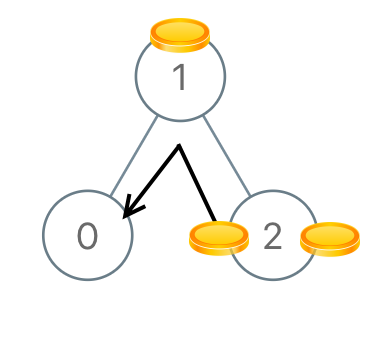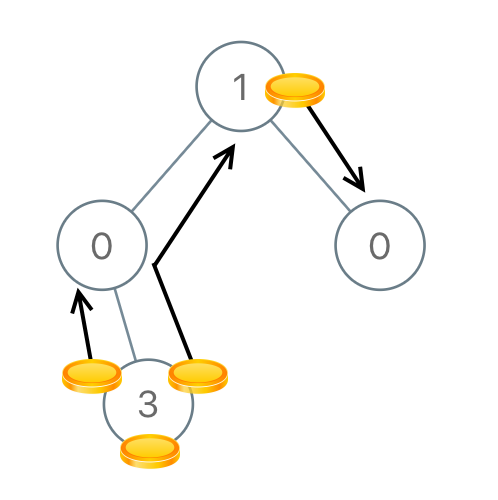You are given an array of variable pairs equations and an array of real numbers values, where equations[i] = [Ai, Bi] and values[i] represent the equation Ai / Bi = values[i]. Each Ai or Bi is a string that represents a single variable.
You are also given some queries, where queries[j] = [Cj, Dj] represents the jth query where you must find the answer for Cj / Dj = ?.
Return the answers to all queries. If a single answer cannot be determined, return -1.0.
Note: The input is always valid. You may assume that evaluating the queries will not result in division by zero and that there is no contradiction.
Note: The variables that do not occur in the list of equations are undefined, so the answer cannot be determined for them.
Example 1:
Input: equations = [["a","b"],["b","c"]], values = [2.0,3.0], queries = [["a","c"],["b","a"],["a","e"],["a","a"],["x","x"]] Output: [6.00000,0.50000,-1.00000,1.00000,-1.00000] Explanation: Given: a / b = 2.0, b / c = 3.0 queries are: a / c = ?, b / a = ?, a / e = ?, a / a = ?, x / x = ? return: [6.0, 0.5, -1.0, 1.0, -1.0 ] note: x is undefined => -1.0
Example 2:
Input: equations = [["a","b"],["b","c"],["bc","cd"]], values = [1.5,2.5,5.0], queries = [["a","c"],["c","b"],["bc","cd"],["cd","bc"]] Output: [3.75000,0.40000,5.00000,0.20000]
Example 3:
Input: equations = [["a","b"]], values = [0.5], queries = [["a","b"],["b","a"],["a","c"],["x","y"]] Output: [0.50000,2.00000,-1.00000,-1.00000]
Constraints:
1 <= equations.length <= 20equations[i].length == 21 <= Ai.length, Bi.length <= 5values.length == equations.length0.0 < values[i] <= 20.01 <= queries.length <= 20queries[i].length == 21 <= Cj.length, Dj.length <= 5Ai, Bi, Cj, Djconsist of lower case English letters and digits.
A:
build a graph, then do dfs to find the path from C to D.
上面解法的弱点(不好看的点)就是需要检查C/D是否已经被发现。否则不容易分辨检查二者是否相等的情况
主要思路,就是递归找关系, 并把其结果乘积。下面的方法,并没有考虑 e /a. = 1, e/b = 1. 然后求a/b的。 所以时错误的
class Solution { public: vector<double> calcEquation(vector<vector<string>>& equations, vector<double>& values, vector<vector<string>>& queries) { vector<double> res; int N = equations.size(); unordered_map<string, unordered_map<string, double>> map; for(int i =0;i<N;i++){ string dividend = equations[i][0]; string divisor = equations[i][1]; // include themselves map[dividend][dividend] = 1; map[divisor][divisor] = 1; double value = values[i]; map[dividend][divisor] = value; if(value != 0 ) // as equations can exist 0 / a = 0 map[divisor][dividend] = 1.0 / value; } unordered_set<string> usedStrings; for(auto query : queries){ res.push_back(dfs(query[0], query[1], map, usedStrings)); } return res; } private: double dfs(string a, string b, unordered_map<string, unordered_map<string, double>> &map, unordered_set<string> &usedStrings){ if(usedStrings.find(a) != usedStrings.end()){ return -1; } if(map[a].find(b) != map[a].end()){ return map[a][b]; }else{ usedStrings.insert(a); double res = -1; auto iter = map[a].begin(); while(iter!= map[a].end()){ res = (iter->second) * dfs(iter->first, b, map, usedStrings); if(res != -1){ break; } iter++; } usedStrings.erase(a); return res; } } };
Errors:
1: map里由于我保存了 a->b b -> a 这样会造成循环
2: 再就是double 给写成 long, 肏
----------第二遍----------- DFS。 每次只考虑 A >= B 的情况, 否则就inverse ---
但这样是不行的。 比如 e=2a, e = 3b
我们插入的就只有上面的。 query时, 无法倒回来通过e的关系
NOTE
因为dfs的时候, 可能-1是来自于 不存在。 也可能是来自于正常的计算结果。 因此不能仅仅靠返回一个double值。 而是要返回bool, 结果保存在另一个参数里



